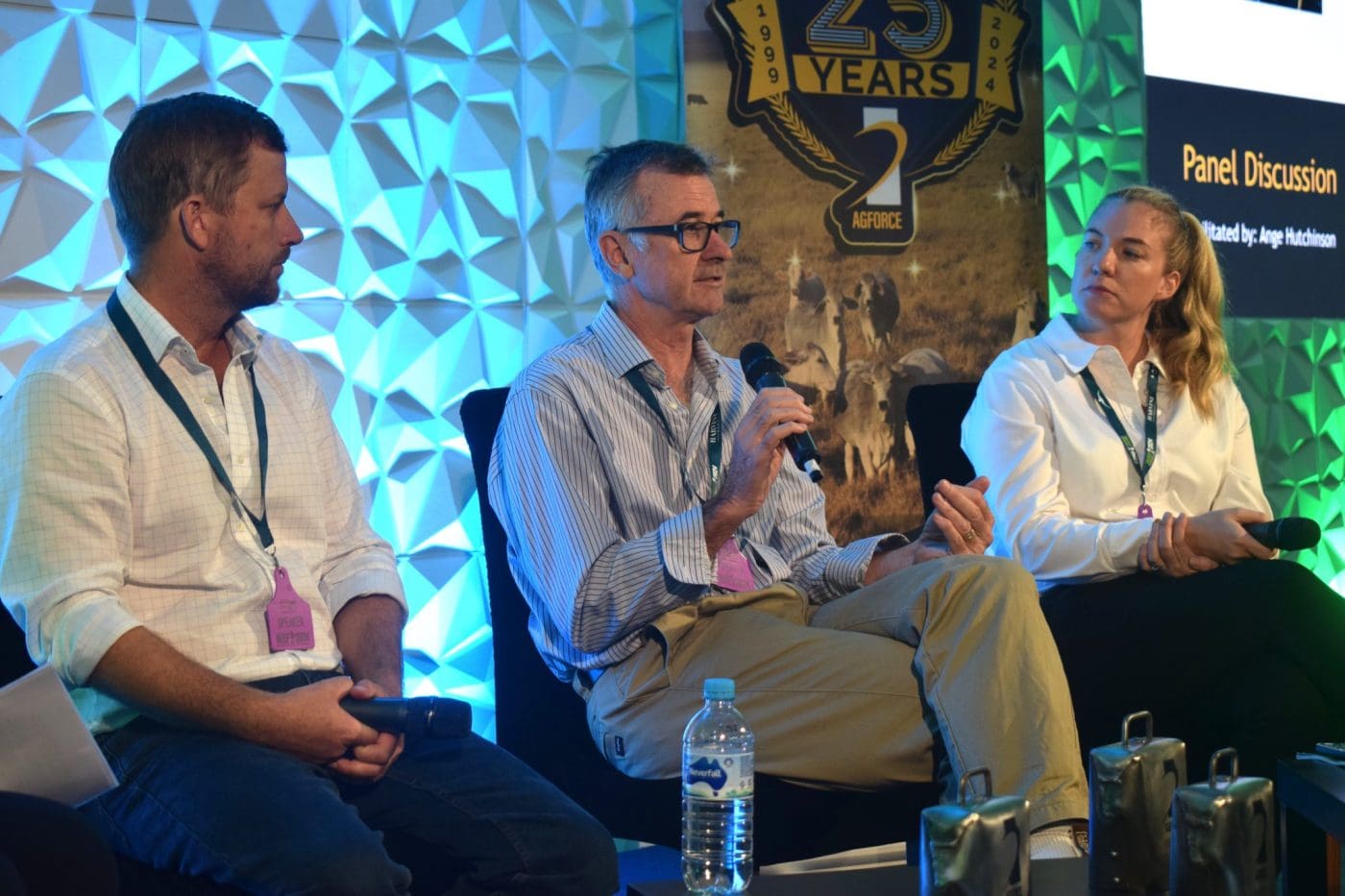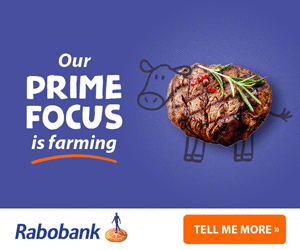
Cattle Australia deputy chair Adam Coffey, University of Queensland scientist Bill Ellis and Jess Loughland from Greenham and the Australian Beef Sustainability Steering Group.
AS THE industry looks to make sure it can continue routine land management in the face of international regulation, vegetation management was a hot topic at Beef 2024 in Rockhampton last week.
Several countries and supply chains are currently drafting up plans to disassociate themselves with products that are a result of deforestation – with Qld’s beef industry part of that conversation.
The topic was tackled at a seminar run by AgForce, which included presentations from Cattle Australia deputy chair Adam Coffey, scientist and koala specialist Bill Ellis and Jess Loughland from Greenham and the Australian Beef Sustainability Steering Group.
An interesting discussion ensued in the question and answer part of forum after a statement was made from the crowd by Central Queensland producer and former Cattle Council of Australia and AgForce Cattle board member Ian McCamley.
Mr McCamley asked if communication about land management could go beyond using “trees” as a broad term.
“We have to sell our message and we are selling our message to a lot of people who are not in our industry,” Mr McCamley said.
“Trees are like people, there are good ones and there are really crappy ones. The crappy ones are the shallow rooted trees that have a negative allelopathic effect on everything around them.
“We want the trees in our environment that have a good deep tap root to bring up all the good stuff from down low, that have a symbiotic relationship with soil organisms and allow grass to create a nice cover over the top.”
Speaking to Beef Central after the forum, Mr McCamley said he was concerned about the focus on canopy cover and trees as a generalisation. He said there had been examples in his local area where leaving areas of untreated regrowth had a negative impact on grass cover, however, it had received applause from some who were less educated about the subject.
Mr Coffey said he agreed with Mr McCamley’s sentiment.
His property near Miriam Vale in Central Queensland is hosting what is called a “silvopasture” project under the State Government’s steak and wood program. Silvopasture is the integration of trees and grazing operations for both cattle feed and forestry products.
He also doing some “native thinning”, where poor quality areas of regrowth are thinned with a bulldozer with a priority of leaving the “genetically superior” trees.
 “When you think about some of the projects we have underway, there are measurements and metrics there to back them up and if we have a decline in biodiversity then maybe we are not doing it right,” he said.
“When you think about some of the projects we have underway, there are measurements and metrics there to back them up and if we have a decline in biodiversity then maybe we are not doing it right,” he said.
“Tree/grass balance is nothing new to a lot of you in the room, but I think the more data we can det about this can be used to justify and communicate what we do.”
Mr Coffey and his wife Jacynta purchased their property with a failed timber plantation, which they ultimately had to remove. He said there was a productivity objective in replacing the plantation with the silvopasture project.
“It is about shade for livestock, it is about moisture retention, frost protection, biodiversity and anything else we can put in there,” he said.
Call for engagement in CA’s “land management commitment”
Cattle Australia is currently developing its own definition of deforestation in the Australian context – which it released the underpinning principles for last week.
Mr Coffey encouraged producers to get involved in the process of drafting up the “land management commitment.”
“The land management commitment at CA is a good process to get involved in because it is trying to set the context around deforestation, or whatever you want to call it, from our perspective in the Australian environment,” he said.
“So far the conversation has been led by areas like the European Union, who have a totally different context and are ultimately targeting clearing of South American rainforest.”
Data needed to show biodiversity outcomes
Ms Loughland agreed that it was important for Australia to make sure it is telling the story of its land management before others with less knowledge fill the void. She said most of the discussion about tree numbers was coming “deforestation” regulation.
“From a Greenham perspective, we have been having conversations with our producers and the first thing that always comes up is that ‘having more trees does not mean better management’ and that is correct,” Ms Loughland said.
“What it then comes back to is questions about what data and evidence we have to show the biodiversity outcomes you are achieving on your farm and how we can develop the tools to demonstrate that in a simple and cost-effective manner. That would then allow us to tell the great story of the industry and back it up with data.”
Ms Loughland said efforts to communicate the land management credentials of the industry like CA’s land management commitment were important.
“We are seeing improvements in the amount of data and evidence we have, but overall, it is going to take time to pull it all together,” she said.
“In the meantime, it is important to build relationships with these stakeholders so they don’t just see us as defending ourselves but they see credibility in what we are doing.”
- The trajectory of deforestation legislation was discussed at a Cattle Australia forum with Integrity Ag & Environment principal Dr Stephen Wiedemann. Beef Central will have a separate storm from that presentation.
